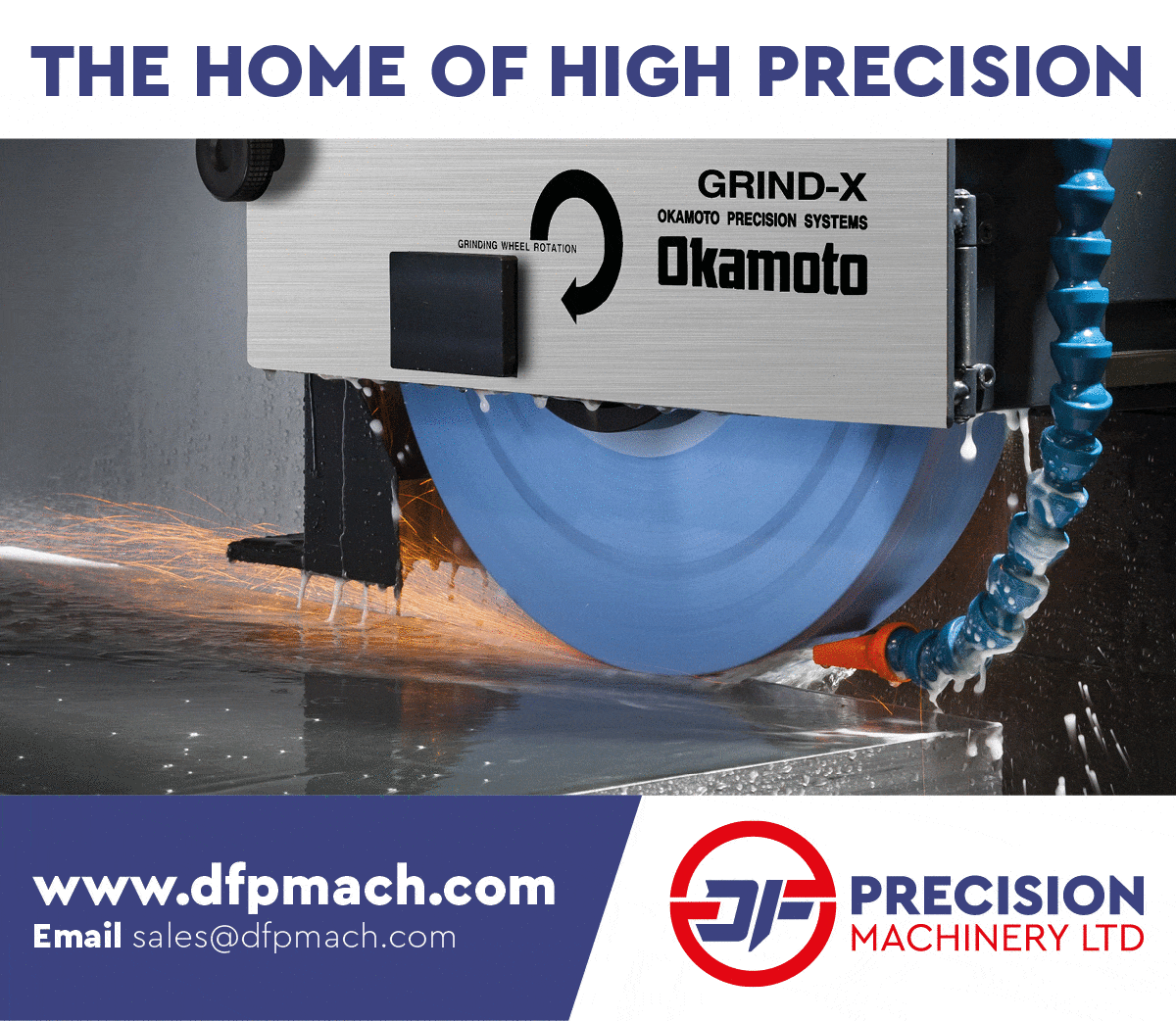Automation is raising grinding technology productivity
Published: | GrindingHub, Stuttgart, VDW, Automation

GrindingHub to showcase efficient fine machining processes - Fine machining requires a great deal of intuition. That is why many companies still take care of grinding and polishing manually. However, this can quickly become a source of high costs and inconsistencies, especially in series production
Automation solutions deliver reproducible quality at all times. With its combination of grinding technology, automation systems and software, GrindingHub 2022 will be the perfect place for companies to obtain all the information they require on this challenging field.
Unmanned production 24/7
For many manufacturing companies, this is one of the key factors for success in this highly competitive field. This has been the case for turning, milling and drilling technologies for some time, but increasingly now also for fine machining. Exhibitors at GrindingHub will be providing a first glimpse of their solutions for achieving significant increases in productivity and reproducibility levels.
Robot-assisted grinding
Top quality surfaces are essential in metal and woodworking as well as in the automotive and aerospace industries. Fine machining in particular is still performed by hand in many cases, as human sensitivity is difficult to imitate. However, manual polishing, grinding and brushing is time-consuming and exhausting work. Automated processes offer an attractive alternative, allowing flawless surfaces to be created faster and at lower cost. At the same time, they relieve people from monotonous and dusty work.
The new tools for automated machining from Schunk GmbH & Co. KG based in Lauffen am Neckar, have innovative features which compensate for force and positional inaccuracies, allowing near-perfect results to be achieved. For example, a pneumatic random orbit sander with axial compensation is the company’s “specialist” when it comes to grinding and polishing. Its adjustable compliance yields constant contact force and uniform surfaces. Users seeking a highly robust and flexible tool for polishing and brushing workpieces will find a suitable solution in the pneumatic polishing spindle. It shortens machining and start-up times by a significant margin. The compensation force and the axial compliance of the tool are individually adjustable, which yields high-quality and reproducible results regardless of the installation position. Different workpiece geometries can be flexibly machined with just one tool, an economic advantage that almost halves investment costs. Schunk offers its application know-how to support customers in making the change from manual to automatic.
“We don’t just sell the appropriate machining tools for the robots, we keep the entire application in mind. On request, we test and validate every application on the customer’s workpiece in our CoLab robot application centre,” assures Daniel Mayer, director Product Sales Robotic Material Removal. “At the end, you receive a test report and video, giving you certainty that the application works.”
“The closed loop ensures superior manufacturing quality as well as minute profile tolerances, together with maximum user-friendliness. Even with extremely challenging workpieces, such as grinding wheel bases, turbine blades or grooving inserts, it has proven to be a robust solution on the shopfloor,” says Marie-Sophie Maier-Wember, managing director of Haas Schleifmaschinen in Trossingen. Software is becoming a driver of precision working because mechanical forces are constantly in play during grinding, especially towards the edges of the grinding tools. These forces affect the interaction between the workpiece, grinding tool, clamping device and grinding machine. They result in ever-increasing levels of inaccuracy, which has an adverse effect on workpiece quality, especially if the system does not allow for a continuous exchange of data between the workpiece and the grinding machine. A self-controlling process based on an integrated measuring solution effectively prevents this loss of precision. Any systematic and machine-specific deviations are continuously identified by measurement technology during operation and forwarded to the Haas grinding machine software. This incorporates a large number of compensatory functions which complement each other. Any deviations in shape can thus be compensated down to µ-level precision.
“Without compensation, the tolerance would be several µ. In the closed loop, we create tolerances down to just a few µ without intervention by the machine operator,” explains the managing director. In addition to acting as a driver of precision, Haas grinding machine software solutions have a direct impact on customer shopfloor operations. The Haas grinding machine series can be connected to the ERP system, allowing automatic tool changing and the further processing of production data.
Future-proof: networked and automation
Automation solutions have long been an integral part of the product portfolio of Hamburg-based engineering company Blohm Jung GmbH, part of the United Grinding Group. A typical example of this is the tool changer for the current series of grinding machines. Designed for maximum cost efficiency, the solution offers users numerous benefits from reduced setup times to virtually unmanned processing, even of complex workpieces.
“Automation is only one of the key factors involved in increasing productivity,” explains Stefan Springer, head of Product Management at Blohm Jung. “Machine connectivity is also gaining in importance, as the future of industrial production will be networked.” Machines are communicating with each other, exchanging data, controlling and regulating each other. This makes processes run more efficiently and increases productivity. Blohm Jung’s “digital production monitor”, for example, offers customers the ideal tool for digitally monitoring and optimizing production capacity utilization from anywhere, 24/7. Running and non-running times, piece counts or malfunction times are displayed in real time. This allows any production backlogs to be detected at an early stage. IT security is given top priority here. Online access to the machine is only granted if the customer submits a service request. Data is therefore only exchanged with the customer’s consent and then only the data which is necessary for providing the desired service. Blohm Jung uses a TÜViT-certified connection to ensure that the data is protected from unauthorised access at all times.
The advantages of the latest products and solutions can be clearly explained and discussed in direct meetings with the experts. Do we have the right equipment for the next project? Which is the best fine machining technique for a specific component and how exactly does the software help me with the manufacturing processes? Interested visitors can find out how to future-proof their processes at the individual companies’ stands at GrindingHub 2022 in Stuttgart.
GrindingHub 2022 in Stuttgart
The first ever GrindingHub will be held in Stuttgart from 17 to 20 May 2022 and is the new leading trade fair and centre for grinding technology. It is scheduled to be run every two years by the VDW (German Machine Tool Builders’ Association), Frankfurt am Main, in cooperation with Messe Stuttgart and with Swissmem (Swiss association of mechanical and electrical engineering industries) as its institutional patron. Grinding is one of the top 4 manufacturing processes within the machine tool industry in Germany. In 2020, the sector produced machines to the value of 870 million euros. Almost 80 percent were exported, with about half going to Europe. The largest sales markets are China, the USA and France. Germany, Japan and Switzerland head the list of top global producers. The grinding technology sector produced 4.9 billion euros worth of machines in 2019.
VDW – German Machine Tool Builders’ Association
Tel: 0049 6975 608168
Email:
www.vdw.de
Quick Links
Telephone
Published By
Roger Barber Publishing
4 Mayfair Court
Cleethorpes
South Humberside
DN35 0QG
© Copyright Roger Barber Publishing , all rights reserved.
Terms and Conditions apply. This website uses cookies, click here for blocking details. Our Privacy Policy is available here.

